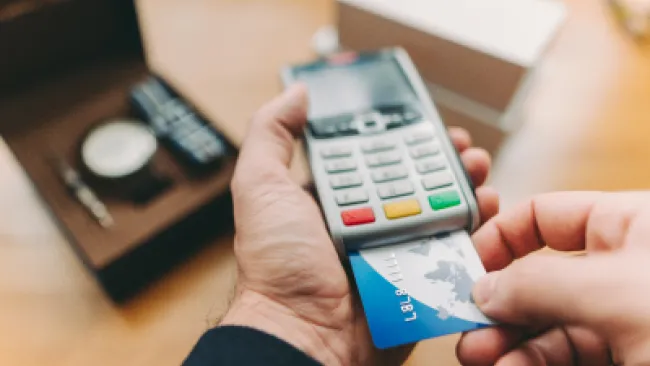Customer loyalty programs are at their core tactical mechanisms for altering the behaviours of specific customers. The behaviours you most want, however, might be quite different, depending on your business model and competitive situation. If you can’t now identify your customers across channels or stores or business units, a loyalty program can help you do that. If you can track your customers individually, but you have little opportunity to interact with them, a loyalty program can provide more opportunities to do that.
On the other hand, if you already have the mechanisms to build and manage individual, highly interactive customer relationships, then you should think very seriously about just what it is you need to get from a loyalty program.
An online or direct-to-consumer business with a unique product or a distinctive brand may be better off relying on its real-world business model to coach customers into more profitable and engaging behaviours.
Over the past two decades loyalty programs of every type have been implemented by businesses in many different categories and have become very familiar to consumers. Indeed, the average household in the United States is currently enrolled in 14.1 different loyalty programs, such as loyalty cards, credit card points, or airline miles-based systems.
There is enough history on the benefits, costs, and effects of customer loyalty programs that we have identified five loyalty program best practices for aligning your loyalty program strategy with your business strategies:
- Data insights to better understand your existing customer base
- Openness to make your rewards program stand out from the crowd
- Modularity to enhance customer service
- Relationship Management to quickly reward loyal customers
- Simplicity to improve the customer experience
Any business wanting to implement effective customer retention and loyalty solutions should know these loyalty program strategies if it wants to have a best-in-class, successful program. In this article we go into additional details about each loyalty program strategy, as well as provide some examples of the outcomes these strategies can create.
1. Data insights to better understand your existing customer base
Never waste an opportunity to gain insights about a customer, as it can drastically improve customer experience and customer satisfaction. Best-practice loyalty programs do this by offering a choice of services or treatments, and this choice itself will reveal something about a customer. For example, in a member recruitment drive, one automotive company offered a choice of free incentives to all new members: a pair of racing gloves with the car company’s logo, a road atlas, or a package of three children’s videos. Obviously, the choice each new member made would reveal a great deal about that member’s needs and preferences.
Loyalty programs in financial services take advantage of the insights gained by identifying people who might choose an award for long-term actions, or lifetime achievement, versus those who choose the largest prize for short-term behaviours. An online business could offer points for responding to simple, one-question surveys, particularly if they are tied to specific online transactions.
The point of gaining insight, of course, is to use it. So the best loyalty programs are connected seamlessly to their owners’ customer databases, and are managed in such a way as to ensure that useful customer information is not only collected, but utilised to increase sales and improve the customer journey. For example, customer data can also be used to increase sales opportunities by creating statistical models to identify the best customers and prospects and the most effective touch cadence throughout the customer lifecycle.
2. Openness to make your rewards program stand out from the crowd
Consumers value openness; that is, they want your service or program to work with others. The more open your system is, the more beneficial it is to existing customers. Openness is inevitable in loyalty programs of all types, from retail reward programs to frequent flyer miles.
All customer loyalty programs are evolving into more and more open architectures, driven by customer demand. The Royal Bank of Canada’s RBC Rewards program allows members to freely exchange points with the Esso Extra Program, for instance, and a whole host of coalition loyalty plans are springing up around the world and thriving. A coalition loyalty program involves an array of companies from which points can be earned and redeemed. Because such programs offer participants more opportunities to earn points, and more places to redeem them, they are generally well regarded by consumers. However, many coalition programs run by third-party intermediaries fail to make detailed customer transaction information available to points issuers, which significantly undermines their benefits to the companies that participate in them.
The main benefit of a loyalty program for the marketer is insights on individual customers, so the more choices the consumer-member has, the better—but only if offering these choices doesn’t undermine the marketer’s ability to gain customer insight. Transferable points and rewards offer loyal customer the greatest flexibility in using program earnings. By showing customers that you understand what they want, you can increase their loyalty to your brand, above and beyond just providing rewards and points.
3. Modularity to enhance customer service
An effective loyalty program must be structured in modules, enabling participants to mix and match aspects to their own preferences. Modular offerings are a practical way to allow for customer-driven personalisation without going to the extreme of full (and costly) customisation. Organisations can develop several alternatives to key aspects of a program, like member qualification, for example, and can offer customers a set of guided choices to select from.
Modularity is also critical if a loyalty program is to operate efficiently in multiple channels, such as online, mobile app, and in a physical store. Mechanisms for earning or redeeming points need to be easy to plug into a company’s back-office systems, whether the incoming customer requests are coming from the website, the call centre, or through the point-of-sale system, for instance.
Additionally, a sophisticated marketing approach to a loyalty program improves customer service by offering different sets of choices for different groups of customers based on their value—so everybody wouldn’t be choosing from the same set. Anyone who’s ever reached a gold or platinum level in an airline frequent flyer program, for example, knows that the prizes offered at these levels are different than those offered at the basic level.
Today’s most successful loyalty programs also rely a great deal on alliance partners and contractors to provide prizes or points, as a means of making a loyalty program not only more open, but also more modular. Air Canada’s Aeroplan, for example, launched 25 years ago and now has 70 commercial partners representing 150 different brands, according to The Globe & Mail. American Airlines’ AAdvantage program generates more than $1 billion in annual revenue just by selling its miles to third parties. A modular structure should allow partners, prizes, and currencies to be added to or subtracted from a program through a kind of plug-and-play method, without requiring a rewiring of the entire program.
4. Relationship Management to quickly reward loyal customers
All loyalty programs should be managed around the customer relationships involved in the programs, rather than the products offered, channels used, or regions served. Chief marketers should align their loyalty program’s goals with their organization’s goals by making sets of customers the direct responsibility of particular managers or management groups. Then they should measure those managers by the positive impact they have on customer behavior.
Organise a loyalty program’s marketing efforts so the customers whose behaviours are targeted for change are taken care of by people whose annual evaluations are based on improving the numbers with respect to those customers. This will not only be a catalyst for genuine successes with a loyalty program, but it will also send a clear signal that it’s necessary to make progress in each customer segment.
Relationship management also implies paying attention to customers in real time, rather than in mail-order time, or on a billing cycle. For a retail business this means linking the point-of-sale system to the loyalty program, so real-time offers and messages can be delivered to the customer during actual purchase transactions. And when a service glitch occurs, an apology (perhaps sent via personalised email) to those customers affected by the glitch is more necessary than ever. This apology could include an offering of a loyalty program’s currency as compensation to help soothe the wronged customer. Studies show that when a customer has any kind of service problem immediately redressed, or an apology rendered, the relationship can improve, and the more immediate the response, the more dramatic the improvement.
One way forward-thinking companies are linking immediacy to their customer interactions is through social media. These firms use social media tools to enhance relationships with their loyalty program customer-members, even building communities of customers with similar interests.
Woolworths, a chain of supermarkets and other retail outlets in Australia, encourages members in its Everyday Rewards program to interact with each other and with employees online, and to post both positive and negative reviews on the products it sells. This may sound risky (what if some customers who don’t like a product end up driving away others?) but ensuring a balanced set of customer reviews will typically improve the credibility of the website and increase customer trust in the brand. Woolworths reports that over the past year of allowing individually posted customer reviews of products, it only had to remove two negative reviews (for bad language or tastelessness).
5. Simplicity to improve the customer experience
A program with fewer rules and restrictions is more engaging for the customer, and it’s more trustworthy. It’s better to narrow your rewards offers to those that can be delivered dependably, rather than including elements that can’t be relied upon, simply because they may not be available. Every time a frequent flyer tries to redeem miles and is frustrated by the lack of “mileage” seats available, his trust in the airline’s brand declines—and so does his likelihood of repurchase.
Companies that can’t deliver reliably on what their loyalty marketing strategy promised risk undermining trust in their brand. So, while it’s important to manage the provision of free and discounted products in an economical way, businesses will be better off not offering deep-discount prizes at all if they can’t make them available to the vast majority of loyalty program members who will be seeking them out.
Business strategy and loyalty program strategy go hand in hand
A successful loyalty program strategy delivers insights and helps to build customer relationships by being open, modular, and simple—and by offering rewards that not only interest individual customers, but also encourage those customers to take specific actions that align with a company’s business goals. When the above loyalty program best practices are put in place, your loyalty program marketing strategy can improve the customer experience, increase customer retention, and ultimately, drive real business results.
















